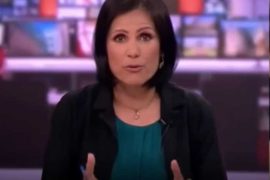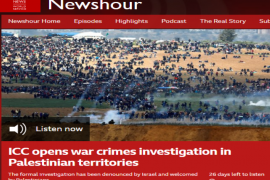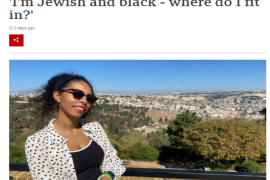1) At the Tablet, Yair Rosenberg notes “13 Inconvenient Truths About What Has Been Happening in Gaza“.
“The protests on Monday were not about President Donald Trump moving the U.S. Embassy to Jerusalem, and have in fact been occurring weekly on the Gaza border since March. They are part of what the demonstrators have dubbed “The Great March of Return”—return, that is, to what is now Israel. (The Monday demonstration was scheduled months ago to coincide with Nakba Day, an annual occasion of protest; it was later moved up 24 hours to grab some of the media attention devoted to the embassy.) The fact that these long-standing Palestinian protests were mischaracterized by many in the media as simply a response to Trump obscured two disquieting realities: First, that the world has largely dismissed the genuine plight of Palestinians in Gaza, only bothering to pay attention to it when it could be tenuously connected to Trump. Second, that many Palestinians do not simply desire their own state and an end to the occupation and settlements that began in 1967, but an end to the Jewish state that began in 1948.”
2) At the Forward, Einat Wilf has an essay titled “The Gaza Protest Is About Ending Israel“.
“The Palestinian demand for “return” has been shaped in the wake of the 1949 failure to prevent the establishment of the state of Israel. Having failed to prevent the UN partition vote diplomatically, and having failed to prevent Israel’s emergence militarily, the demand for “return” was shaped as a continuation of the war against Israel by other means, a war that continues to this day.
It is precisely the reason why despite Israel retreating fully to the 1967 lines between Gaza and Israel, the people of Gaza are demanding to take what is beyond those lines, which they still believe is very much theirs.
If the war is ever to end with true peace, the Palestinians as well as the Arab and Islamic world at large have to come to accept the Jewish people as an indigenous people who have come home and who have an equal and legitimate right to their ancestral land.”
3) At the JCPA, Jonathan Halevi analyses a press release put out by Hamas on May 14th and presumably seen by the BBC.
“If, in the past, Hamas counted its victories according to the number of Israeli casualties, today it measures victory according to the number of Palestinian casualties. Hamas is interested in flowing Palestinian blood. Its press release mentioned its hope that these events would lead to a broad intifada in the West Bank, Jerusalem, Israel, and various major cities. In other words, Hamas perceives Palestinian blood as an explosive material, the purpose of which is to threaten regional stability in a way that will help it to build a coalition against Israel and weaken it from within through an intifada of Israeli Arabs. Thus, for the purpose of a reaching a broader audience, Hamas did not immediately respond to the killing of Palestinians who attacked IDF soldiers (or to an Israeli air force attack on Hamas targets). This also contradicts its repeated promises to the Palestinian public that its armed activists would follow the participants in the march and protect them if the IDF opened fire on them.”
4) The High Level Military Group has published a report about the ‘Great Return March’.
“Hamas’s use of actual smoke and mirrors to conceal its aggressive manoeuvring on the Gaza border is the perfect metaphor for a strategy that has no viable military purpose but seeks to deceive the international community into criminalising a democratic state defending its citizens.
The UN and EU, NGOs, government officials and media — primary targets for Hamas — have been willingly taken in. For example a Guardian headline, ‘The use of lethal force to cow nonviolent demonstrations by Palestinians’, blatantly misrepresents the violent reality that has been plain for all to see. Likewise the NGO Human Rights Watch claims that we are seeing a movement to ‘affirm Palestinians’ internationally-recognised right of return’.
In reality these demonstrations are far from peaceful and do not pursue any so-called ‘right of return’. Rather they are carefully planned and orchestrated military operations intended to break through the border of a sovereign state and commit mass murder in the communities beyond, using their own civilians as cover. The purpose: to criminalise and isolate the State of Israel.”




